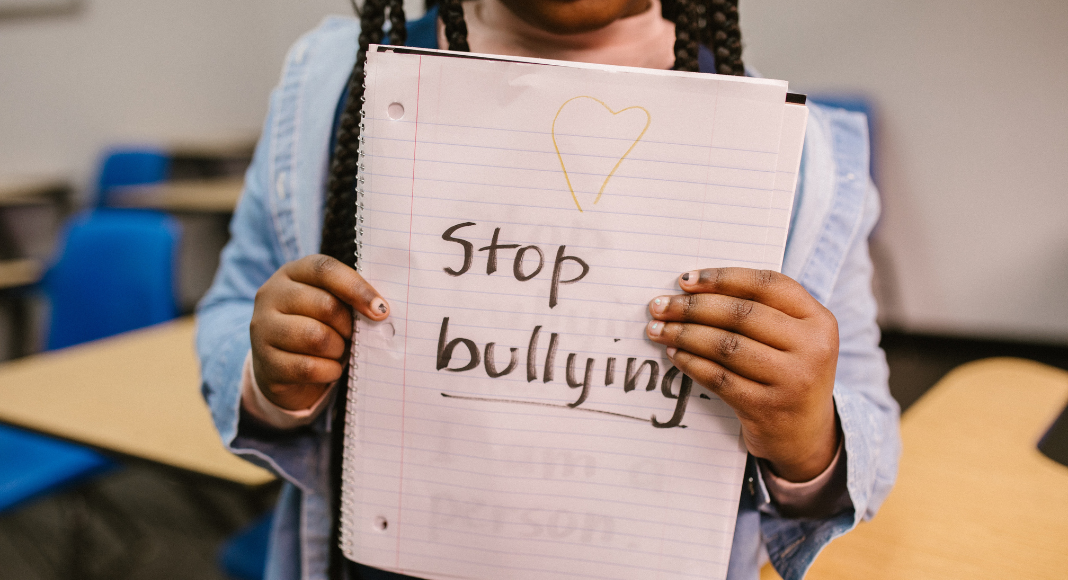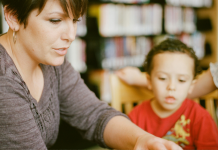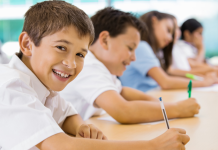I love October because it brings awareness to two of my favorite causes – dyslexia as well as bullying prevention.
I am a Nationally-Certified Trainer and Consultant in the Olweus Bullying Prevention Program (pronounced “ole-vay-us”). The information I’ll be sharing is from the Olweus website and from my training experience.
Dr. Dan Olweus and his proteges have been collecting worldwide data on bullying behavior for over 30 years. He originally developed this school-wide, systems change program based on the empirical evidence and knowledge he gleaned from decades of research.
Dr. Olweus’ definition of bullying is when someone repeatedly and on purpose says or does mean or hurtful things to another person who has a hard time defending himself or herself.
Important considerations include that bullying involves aggressive, unwanted, and negative behavior.

Joking and accidental meanness does not qualify. Students need to apologize and try to make things right if they genuinely don’t have the social skills to know whether their behavior is appropriate. Some schools implement Restorative Justice programming for this reason. However, Restorative Justice needs to be used extremely carefully in bullying situations (if at all) by licensed professionals only because of the imbalance of power and risk of revictimizing the children.
It also involves a pattern of behavior repeated over time. Of course, schools shouldn’t wait for the behavior to continue before addressing it. This applies to something that has the potential to be repeated or a serious incident that happens one time.
In my opinion, the most important and damaging consideration in the definition of bullying is that it involves an imbalance of power or strength. The person being bullied then experiences a genuine fear of the aggressor, similar to a domestic abuse situation. People ask, “Why can’t you stand up for yourself? How could you let that kid treat you like that?” This is extremely invalidating. Nobody deserves to be bullied or abused. The person showing the behavior needs a clear message that there are consequences and that the behavior is not tolerated.
The imbalance of power lends itself to the main negative impacts of bullying behavior. The student feels afraid, intimidated, and unsafe, and can internalize the problem as something that is somehow their fault (especially if the family is saying they should fight back, etc). Students then don’t want to attend school and can fall into depression and other related mental health issues.
What can you do if you think your child is somehow involved in bullying?
I think parents should be discerning about whether their child could be the person showing bullying behavior as well as the person being bullied. To an extent, this kind of aggressive behavior is developmentally normal, especially in the younger ages (grades 3-6 are really the hottest ages for bullying behavior). Children are learning who they are in relation to others.
Our society often rewards students who are more outspoken, strong, and tough. Sometimes this provides a message that doesn’t support students who are on the margins of the group. Sometimes when some students are so opinionated and aggressive, adults don’t want to tell them no and experience the backlash from that student and parent. Other children recognize that this “top dog” has social capital and prestige in the group for being the alpha and that is desirable, further reinforcing the behavior among peers.
- Talk to the teacher first. The person working with your child the most in the setting (school, extra-curriculars) should have the first opportunity to hear what’s going on and investigate.
- Ask how you can help support the adult who is investigating and continue to communicate if the issue continues.
- Continue checking in with your child and listen to them without judgment. I suggest that adults listen more than they talk.
- If the problem still doesn’t stop, bring your concern respectfully to school administrators and set up a meeting. Remember that you are all on the same team in supporting your child and you need all of the members of the team to help support your child.
- Get your child a therapist if he or she seems to be experiencing the negative effects of bullying or shows changes in behavior.
- Depending on the issue, you may be referred to the police for intervention (in some sexting and cyberbullying incidents).
In the schools where I worked, we had someone from the county Prosecutor’s Office come in to talk about cyberbullying and sexting in particular, detailing what happens when a child is involved. Some children find themselves on a Sex Offender Registry for sending naked pictures of peers to others. I’d encourage you to have some frank talks with your children and school about how to educate children about these types of issues that occur in every community.
In my experience, 99% of the incidents reported as “bullying” in schools did not fit the definition. Mainly children have interpersonal conflicts or experience general relational aggression without an imbalance of power involved. I see girls who used to be BFFs and then the next day aren’t talking to each other, for example. Sometimes the lines become blurred or invisible.
Either way, advocate for your child regarding negative behaviors, considering that being mean at school shouldn’t be tolerated. Ask your school officials how you can become involved in positive school climate programming to help enhance the culture for all students.













